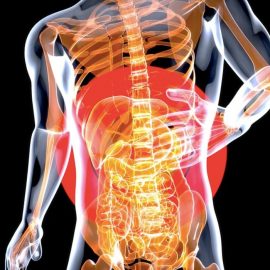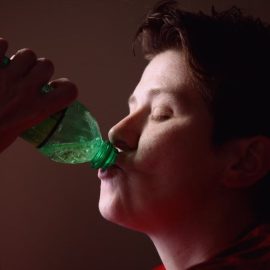

This article is an excerpt from the Shortform book guide to "Blue Mind" by Wallace J. Nichols. Shortform has the world's best summaries and analyses of books you should be reading.
Like this article? Sign up for a free trial here.
Is your mind always “on”? How often does it get a chance to rest and repair? How can you invite such opportunities?
In Blue Mind, Wallace J. Nichols explains that water—looking at it, being near it, and being in it—reduces stress and allows the mind to heal. He discusses the theory of directed attention fatigue and shows how water can give your mind a break and a chance to rejuvenate.
Keep reading to learn how to rest your mind by engaging with water.
How to Rest Your Mind
Your built-in stress response triggers even when you’re facing non-life-threatening situations such as the minor stresses you deal with every day as part of your normal lives. Regularly triggering the stress response can cause long-term damage to your health and well-being. Knowing how to rest your mind is invaluable, especially in today’s world.
Nichols suggests that engaging with nature, particularly water, can mitigate the stress response. Extensive research using self-reported results, brain scans, and other tests shows that time spent in nature gives the brain a rest from stress, activating the parts of the brain that deal with empathy and pleasure, which calms the brain and nervous system.
You can achieve these effects not only by immersing yourself in nature through activities like fishing or snorkeling, but also by spending time in places like aquariums or near fountains, and even by looking at images of natural landscapes or listening to nature sounds.
(Shortform note: Some researchers support Nichols’s suggestion that engaging with nature mitigates stress, and they note that images can be particularly useful in circumstances that may limit how much time people can spend outside their homes, such as the Covid-19 pandemic. The researchers suggest that part of the reason observing nature reduces stress is because it induces feelings of certainty about the future, and as we discussed above, uncertainties like unpredictability and lack of control exacerbate stress. Some have even suggested that not being around nature is a type of disorder—nature-deficit disorder—because of how impactful nature is on our well-being.)
Directed Attention Fatigue: Water Lets the Mind Rest
Nichols argues that one of the ways that water reduces the stress response is by allowing your mind to rest. When your mind is at rest, your emotions and empathy become more active, resulting in a relaxing, stress-reducing state.
Environmental psychologists Stephen and Rachel Kaplan established a theory of two different kinds of attention: directed and involuntary. Directed attention requires you to focus intently on something, which takes up a lot of mental energy. We use directed attention when we’re focusing on work, socializing, driving, or making decisions. Exercising directed attention nonstop for long periods eventually results in what the Kaplans call “directed attention fatigue,” which reduces our mental capabilities.
Involuntary attention, on the other hand, is mostly effortless. We use it when we’re in situations that are different from our usual environments but familiar enough to be interesting without being threatening. When we pay attention to things in these situations, it’s usually only briefly and doesn’t require us to react much, and this gives our brains the chance to rest. Natural environments—particularly those that include water—promote involuntary attention.
| Attention Restoration Theory The Kaplans’ theory of attention is known as the attention restoration theory. It suggests that simply being in nature is not necessarily enough to gain its restorative effects: A restorative natural setting must be large enough to make you feel fully immersed in nature, and separate enough from the real world that you feel like you’re getting away from the stresses of everyday life. This is because being in an environment that’s unfamiliar but safe triggers your involuntary attention, which is an effortless state of being. To restore your attention, your experiences in a natural environment must also line up with activities that you feel intrinsically motivated to do (so if you dislike being on boats, sailing is not likely to provide you with nature’s attention-restoring benefits because it will probably engage your directed attention). Attention restoration theory has also faced some criticism over the fact that there’s not a large body of empirical evidence to support it. |
Water and Creative Inspiration
Water also promotes creativity. Nichols suggests that shifting from directed attention to involuntary attention puts you into a state of mind that lets you create new, spontaneous ideas and engage in improvisational thinking. Nichols refers to this as a state of “flow.”
(Shortform note: The creativity and state of flow that Nichols describes can also help mitigate stress. Research shows that engaging in artistic or creative activities can lower cortisol levels, preserve brain function, and extend your lifespan. Flow-inducing creative activities such as improvisation are often used as therapy to treat conditions like anxiety, depression, and PTSD.)

———End of Preview———
Like what you just read? Read the rest of the world's best book summary and analysis of Wallace J. Nichols's "Blue Mind" at Shortform.
Here's what you'll find in our full Blue Mind summary:
- How water has a profound impact on our well-being and health
- Society’s relationship with water and how it might be improved
- Activities you can do in or around water to reap the healing benefits






